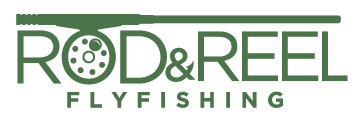Learn all about wading boots for fly fishing! Learn how to choose the best angling footwear based on your needs, plus some important considerations.
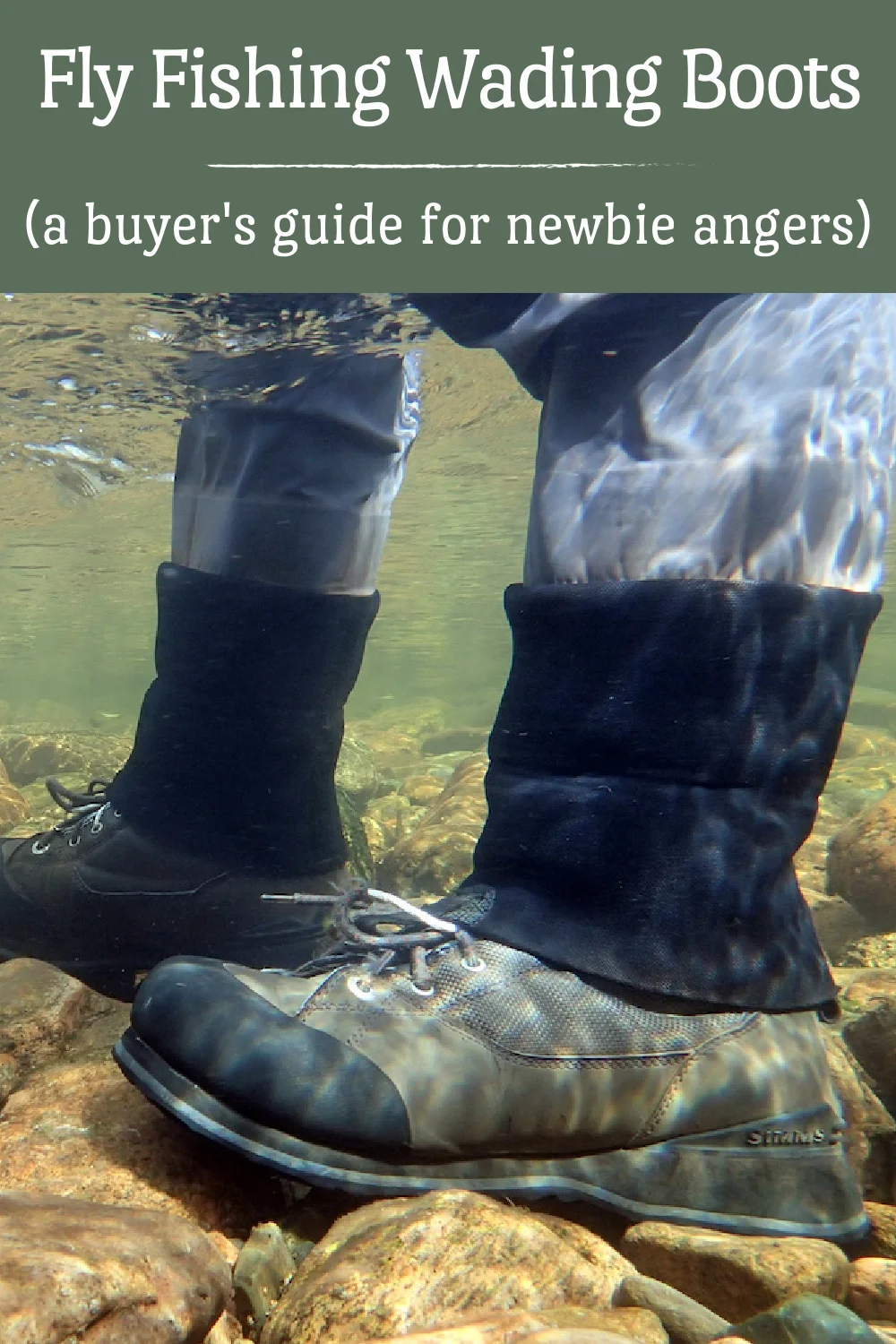
If you’re new to fly fishing, you probably have a lot of questions. I know I did at the very beginning (and don’t get me wrong – I still have plenty). How do I learn to cast? Which fly rod should I get? What fishing essentials do I need? What is catch and release?
These are obviously big, important questions.
But to be honest, one of the biggest mysteries of fly fishing to me so far hasn’t been any of these things. It was which wading boots to buy and, most importantly, which size. I’m one of those half sized shoe people (8.5), and I’m also a female.
And while there are some women’s wading boots (I’ll talk more about my Korkers), a lot of the boots are made for both men and women. This means that I have to make the conversion to women’s size first, then either size up or down to a whole size depending on the shoe.
Then I have to read the reviews to see whether they run large or small, and consider if I mind things running a little tight or I want them more loose. Plus I’ve got waders with a larger sock that will be jammed into the boots too. Some would say #firstworldproblems, but I’m over 40 my friends.
I don’t math as good as I used to.
Plus I’ve been in many a situation where I have been a good little consumer, read all the instructions and size charts and reviews, and still ended up with the wrong size. I know I’m not the only one.
Based on this previous experience, I was very hesitant (stressed!) to purchase my first pair of wading boots. I wanted to get the right size and be ready for fishing “straight out the gate.” I ended up buying them at a fly shop after getting to try them on live, and I’m excited to share what I learned with you.
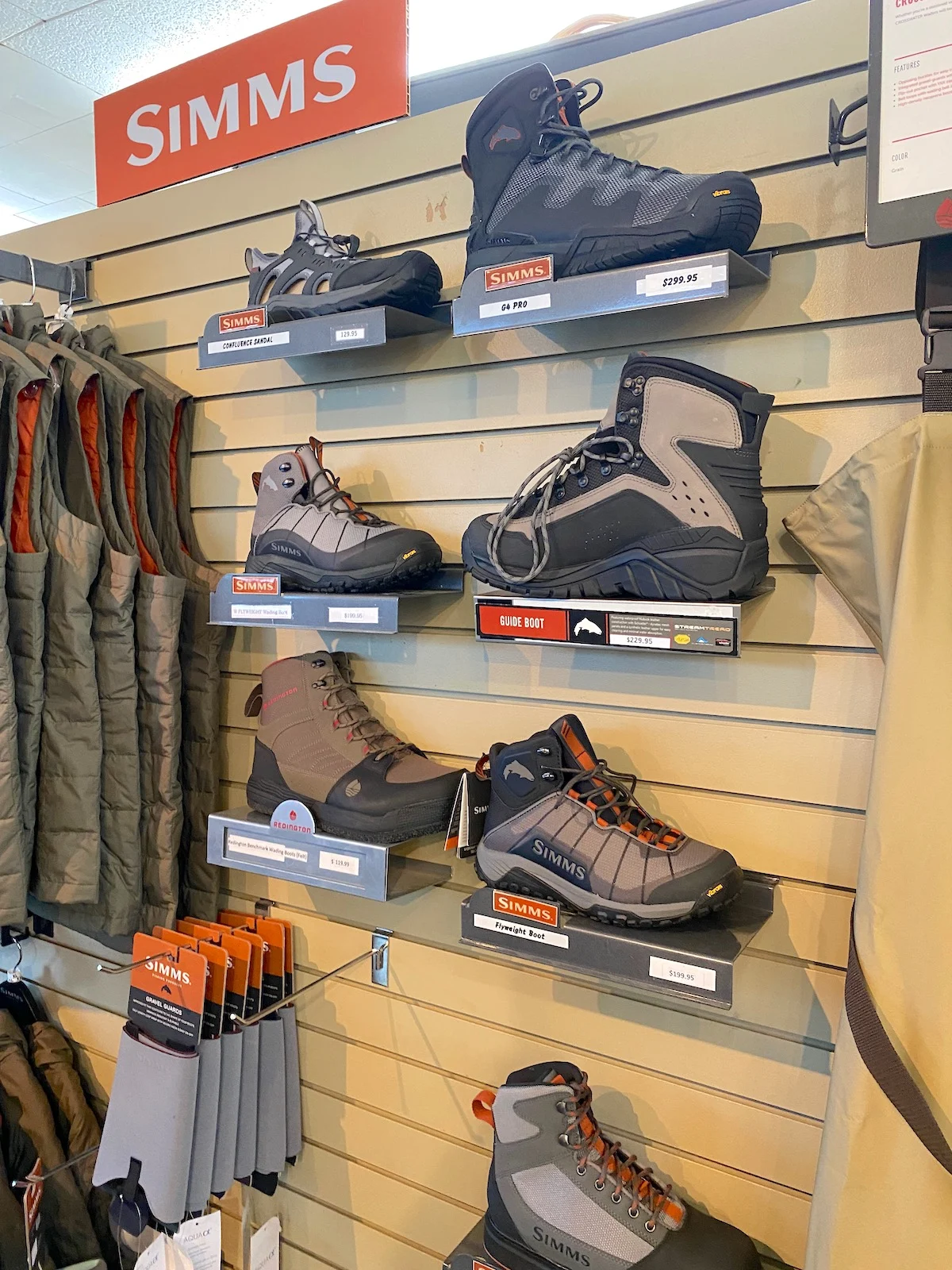
Choosing Wading Boots
If there is one thing you can’t take for granted in fly fishing, it’s your footwear. It doesn’t seem like that big of a deal if you just think about wading into a river, but there’s a lot more to selecting the right boot than you might think. Before we get into the details, I want to answer a few questions about wading boots for the brand new angler.
What is the purpose of wading boots?
I’m glad you asked! Wading boots are essentially your river hiking boot, allowing you to not only walk on land but also in the river (and on slippery rocks). Since you’ll likely be on your feet all day, they are designed to keep you comfortable and provide support during your adventures. Most importantly, they provide traction so that you don’t end up on your bum in the river.
Do wading boots get wet inside?
Yes. They are not waterproof (even if some of the individual materials are), and are intended to get wet. They protect not only your feet, but your waders (or wading socks) from getting punctures or tears.
Do you need to wear boots with waders?
Essentially, yes. Most waders have stocking feet (usually neoprene) at the bottom, and this part goes directly into the boot. You cannot wear waders into the river without boots (unless the boots are already attached).
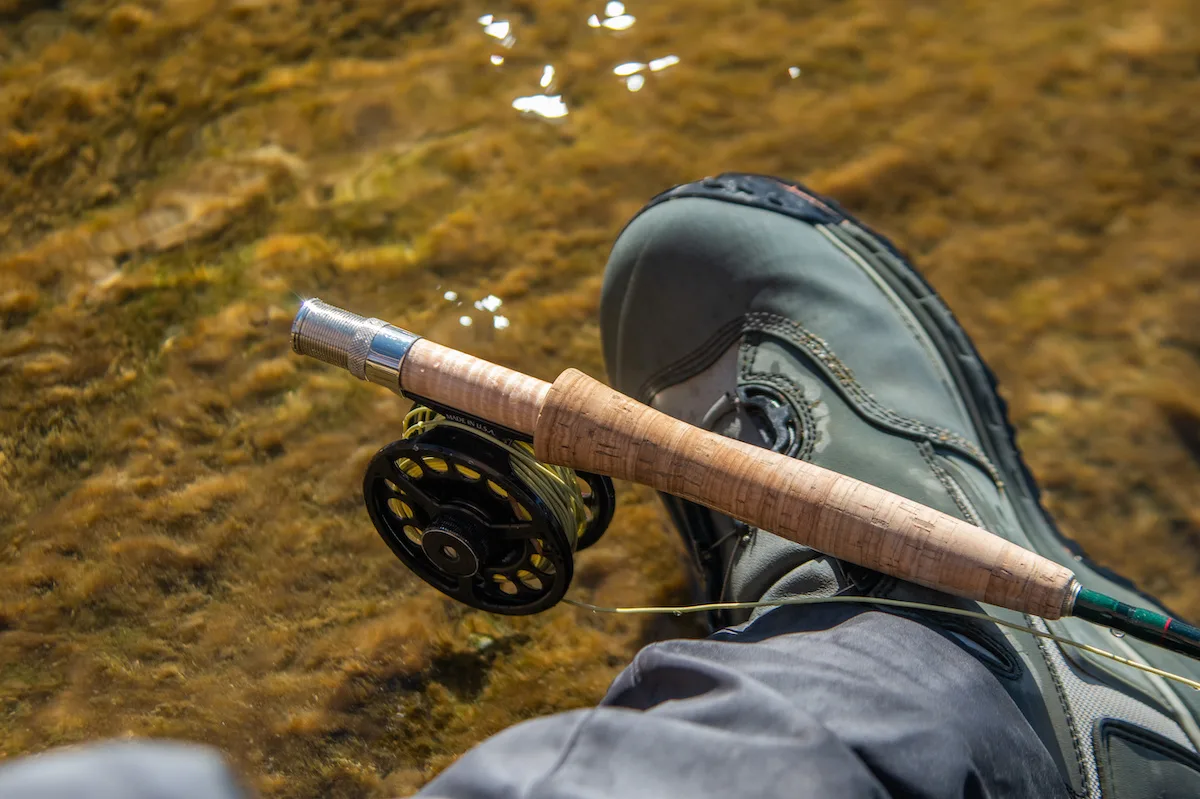
How long do wading boots last?
The generally accepted recommendation is 3 – 4 seasons but this can vary greatly on usage and how far you are hiking in them. Treat your fly fishing boots like tires and other pairs of shoes you own. When the nubs start to wear down or the support is shot, consider replacing them.
Are felt soled wading boots banned?
In some states, yes. This is important to know because if you live in or are going to fish Alaska, Maryland, Missouri, Nebraska, Rhode Island, or South Dakota, you’ll not be able to wear felt bottom boots there. This is also true for Yellowstone National Park. Always check the regulations of where you are going.
Felt soles provide great traction, especially in sand or gravel. But they also take awhile to completely dry out. During this drying, they can transfer invasive species to other areas. If you visit multiple locations during one trip, you can imagine the potential for spread. Learn more about cleaning your gear and preventing invasive species here.
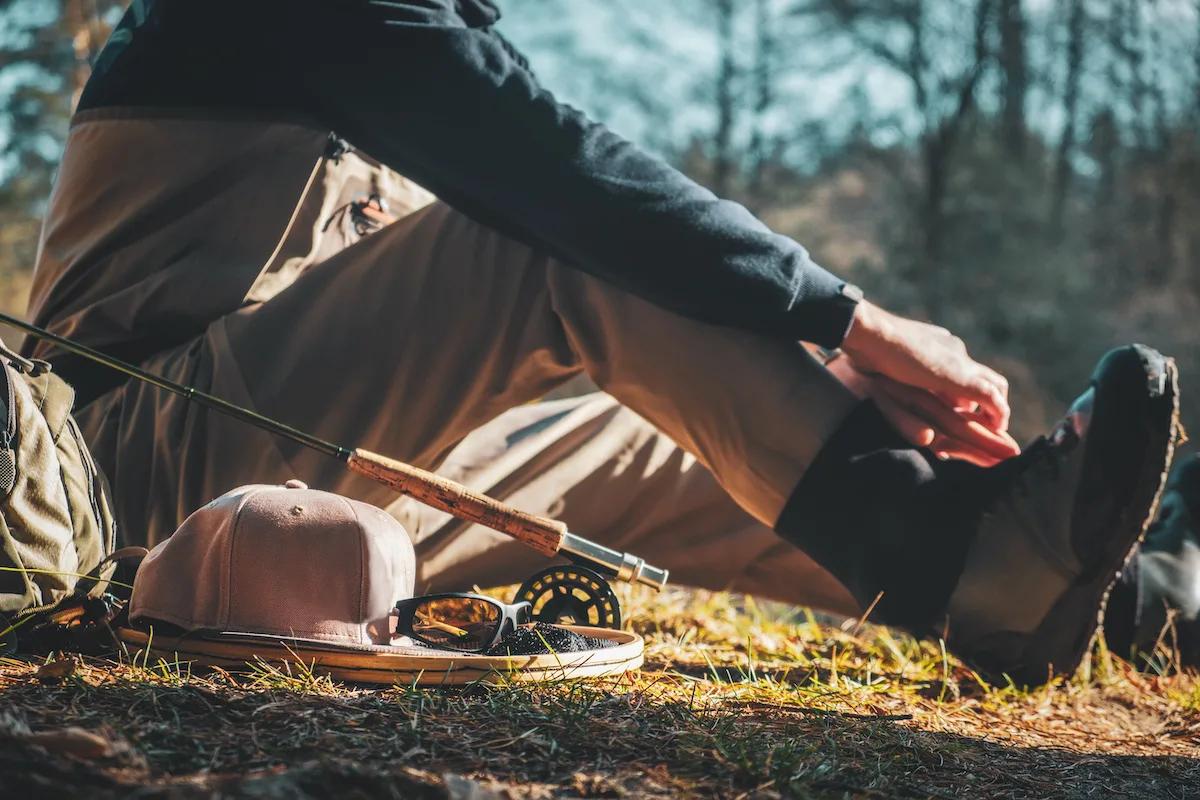
Wading Boot Considerations
Now that I’ve answered some basic questions, are you ready to get some wading boots? Before you buy your first pair, here are some things that should be top of mind. The order will be different for each person, so choose what is most important to you.
Budget
This is always a consideration in any new sport, right? How much do I want to spend to gear up? For me personally, investing money in boots is important. You can buy a new $80 pair of crappy boots each year, then end the season with totaled tootsies. When my feet get trashed, it can ruin the hobby for me.
Usually I’m all for a good deal, I truly believe in the fly fishing brands’ abilities to design footwear that gives anglers what they need. Go with a known entity like Simms or Korkers and expect to spend between $150 – $300 for a good pair of boots. Your feet will thank you.
Ankle Support
A turned ankle is no fun, but that is what the rivers bring. I swear fish are down at the bottom of rivers placing bets on who is going to eat it first when they see a group wading in. Wading boots should provide nice ankle stability (so lace them all the way up). This can save your knees as well. Make sure the boots you select fit your ankles nicely.
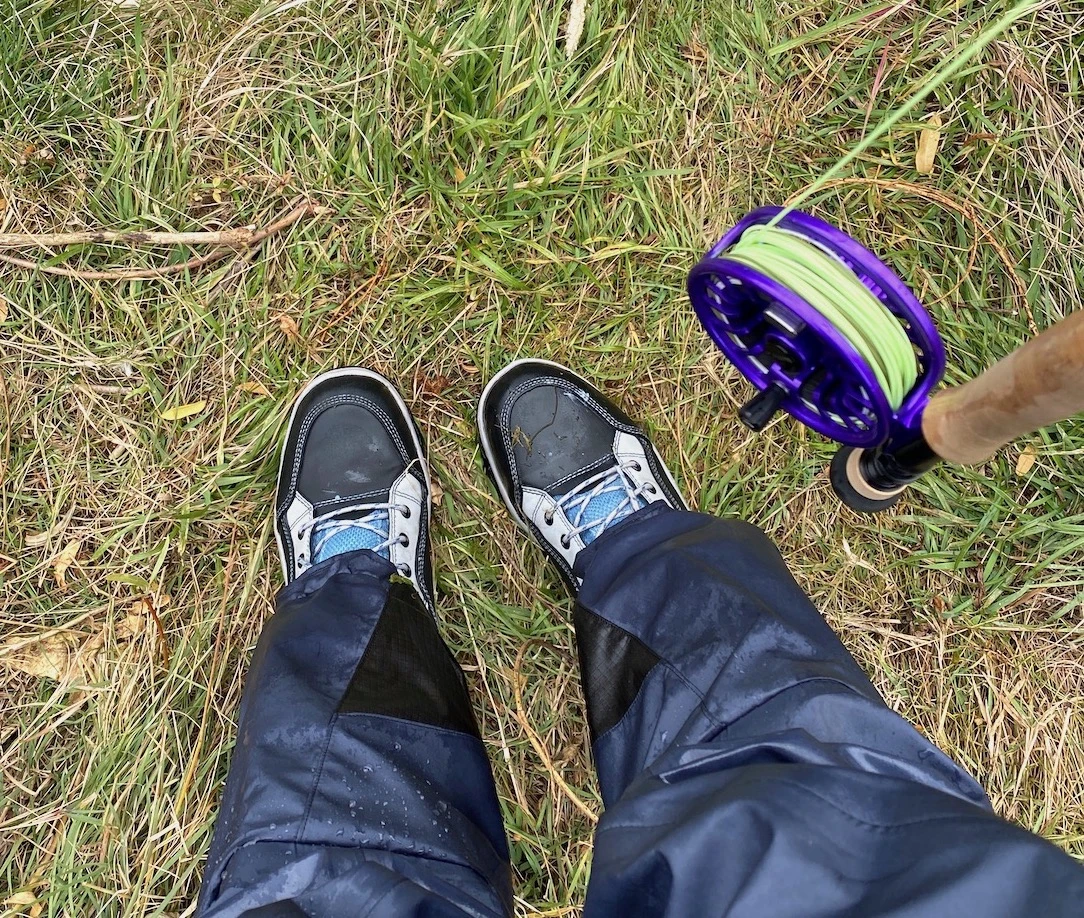
Comfort
Generally speaking, a fly fishing boot should be comfortable on your foot with the waders on. Please try them on with your waders, and walk around. I recommend a little bit of a runway walk, personally. If the boots feel really tight or are hitting you in all the wrong areas, try a different size or different brand/style. When you find the right boot, they will feel great on your feet (of course there might be a break-in period, but they shouldn’t break your feet).
Material
You will see a lot of fancy words for the various materials that brands use, some of which are proprietary – and some of which are just other names for a type of synthetic leather or special rubber. Don’t let them confuse you. You’re looking for a water resistant or waterproof material as well as good drainage and a non-slip sole.
If you purchase boots from one of the big fly fishing brands, you’ll get what you need. If you see “hydrophobic,” that is good. You want your boots to be afraid of water, essentially.
Heel
just like regular shoes, you don’t want your heel to come out of the boot or slide around while walking. This can cause instability (and thus injury), but also you can develop some nasty blisters from any rubbing. If your heel is sliding around, grab a different size or pair of boots. Or tie them tighter and see if that helps.
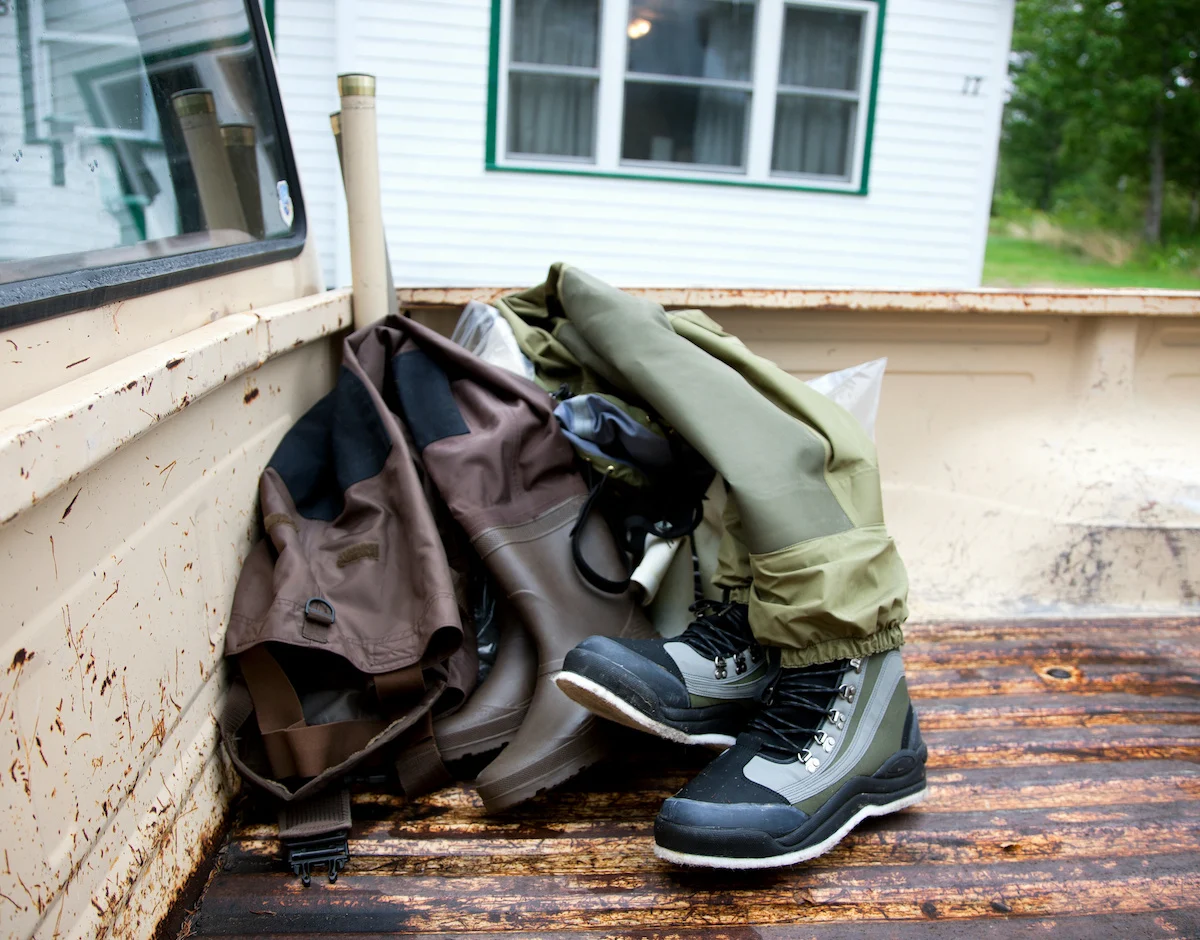
Soles
Rubber
You’ll be looking for Vibram soles (or something similar with another name), which are not only durable but help you keep you upright on slippery river rocks. The rubber Vibram soles are great for hiking in, too. A standard Vibram sole lasts for several years, and is perfect for a variety of river conditions. If the rivers you’re going to are clear or muddy or sandy without a ton of uneven areas, rubber is great.
Felt
We already talked a little bit about how felt soles are illegal in some areas due to invasive species. But if you’re allowed to wear them, they provide amazing traction over slippery rocks and slimy moss. I have mediocre river legs personally, and I love felt.
If you try felt in your local waters and love it, it might behoove you to have two separate pairs of boots, one with rubber soles and one with felt. You can use the felt locally and then take the rubber with you any time you go elsewhere (also see the cleats section below).
I also have to plug the Korker’s system here, because my wading boots have removable/interchangeable soles. This allows me to have multiple options: I own basic rubber, rubber cleat, and felt soles. I’m still learning which is best for me on a regular basis, so I like this versatility.
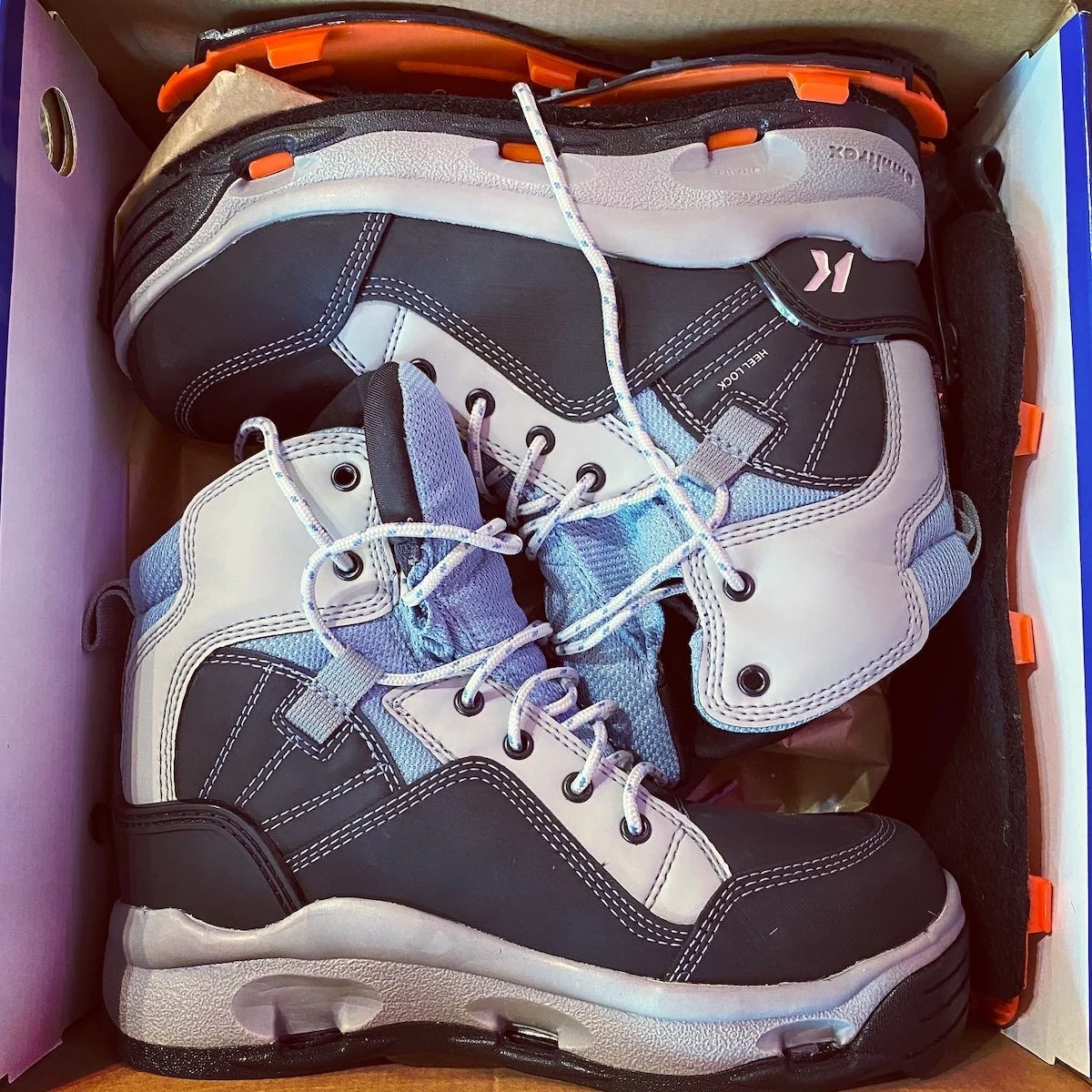
Cleats
One added benefit to a lot of fly fishing boot soles is cleats – and this goes for both rubber and felt. Cleats do exactly what you might think, and this is provide additional grip in situations where it’s needed. If there is a lot of debris like leaves and other material in the body of water you are going to (or you can’t clearly see the bottom), cleats can provide extra traction.
Tip: some boots come with screw in cleat options (they might also be called studs), so make sure you understand what cleat and soles are going to work with your boots before purchase. This will be important as your fly fishing career expands, along with your destinations!
Gender
There are lots of men’s fly fishing boots on the market, with Simms being a frontrunner in the category. The G3 Guide boot is a popular choice for dudes. If you go to a fly fishing shop, they will likely have a variety of Simms boots and maybe some others you can try on (which I encourage). The Orvis PRO is another solid option.
But if you’re a female, you might want to consider some of the lady angler options like the Simms Flyweight, Orvis Women’s Ultralight, or (my personal favorite) the Korker’s Buckskin Mary. Women’s wading boots have come a long way, and I’m very happy with the comfort of my Korker’s (and the interchangeable soles I have mentioned 1,000 times). By the way, I wear an 8.5 in street shoes and my wading boot size is 8.
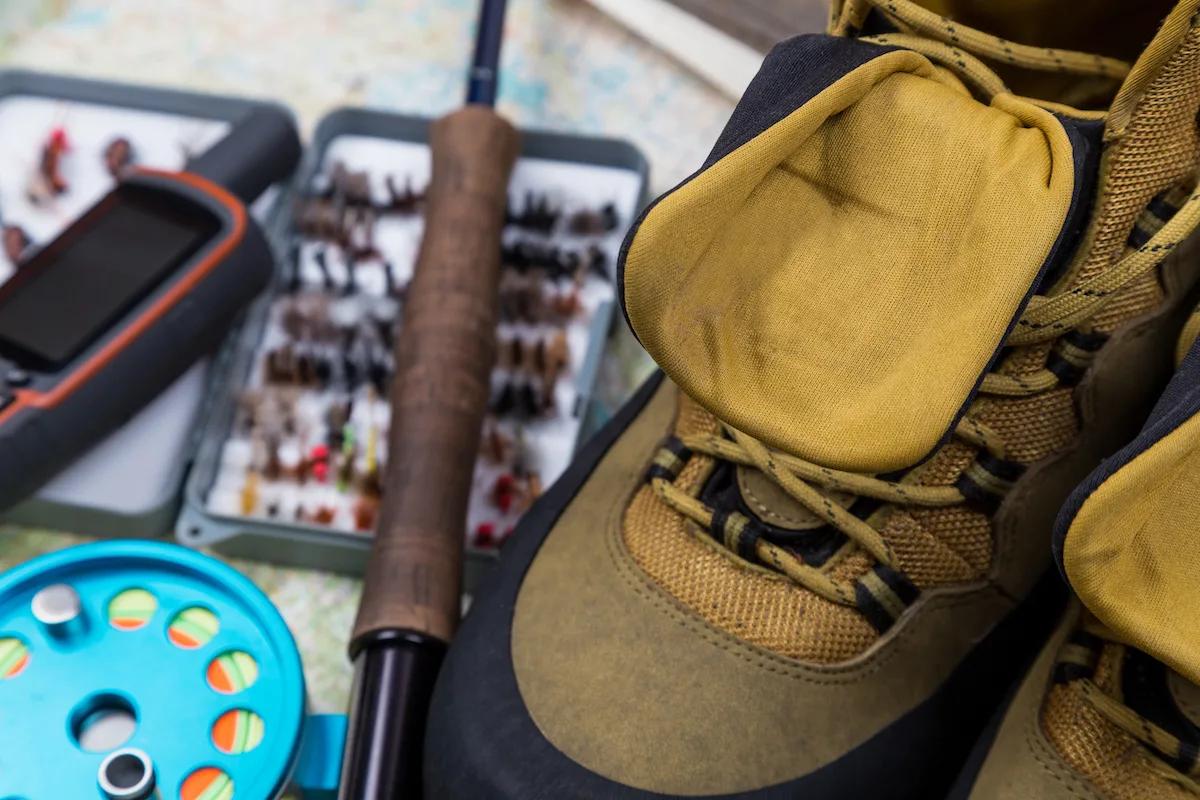
Other Features
Some boots are “ultralight,” some boots have boa systems (wires with tie downs) instead of laces like cycling shoes . . . there are even low top shoes as opposed to boots. If you’re a newbie, don’t get hung up on these extras at the beginning. You will figure it out. The most important thing to focus on at the beginning is that the boots fit and that they are comfortable. The rest will come!
My final thoughts: while you don’t have to purchase your boots at the local fly fishing shop, it’s nice to support the local economy. But most importantly, you get a chance to try them on. You’ll get a chance to experience the fit and comfort. AND GET A CORRECT IDEA OF SIZE.
While most of the fly shops don’t seem to have a huge selection, they might have just what you need . . . and you’ll start to learn what you like. Otherwise, an online purchase is fine, but just remember that you might have to order a few sizes or prepare to make some returns (check policies!).
Now that I’ve given you the low down on wading boots, I’d love to hear your thoughts! What boots do you own, what was your experience with purchasing? Leave me some comments!
